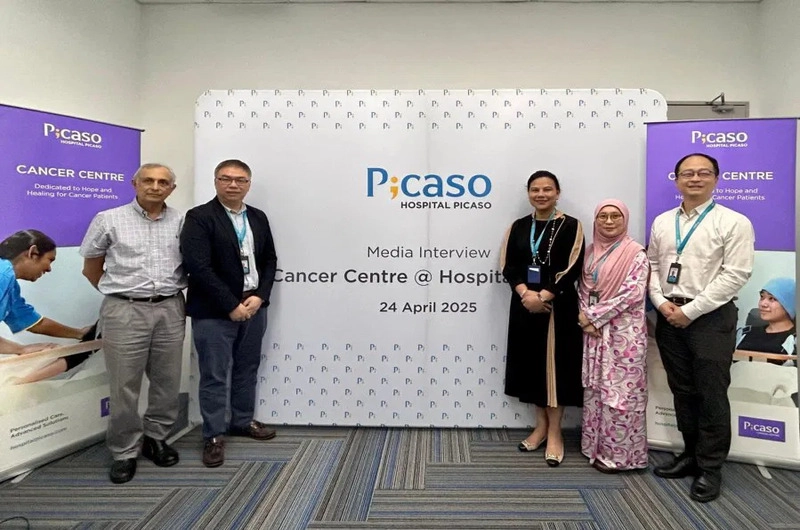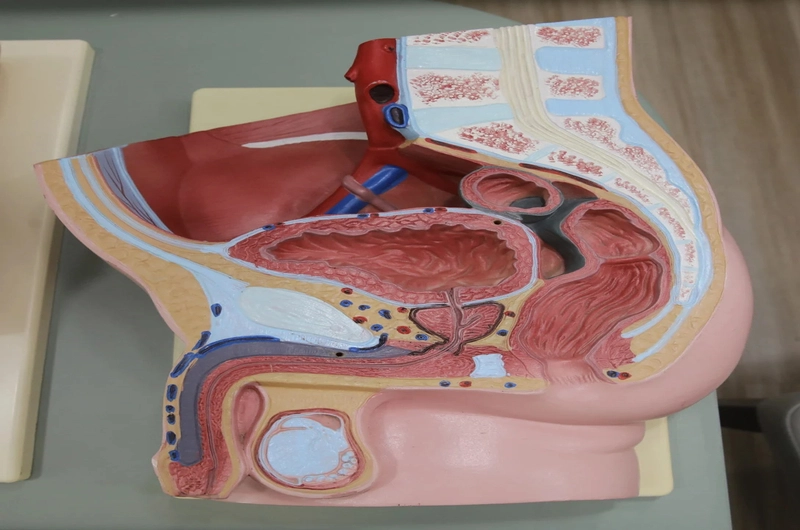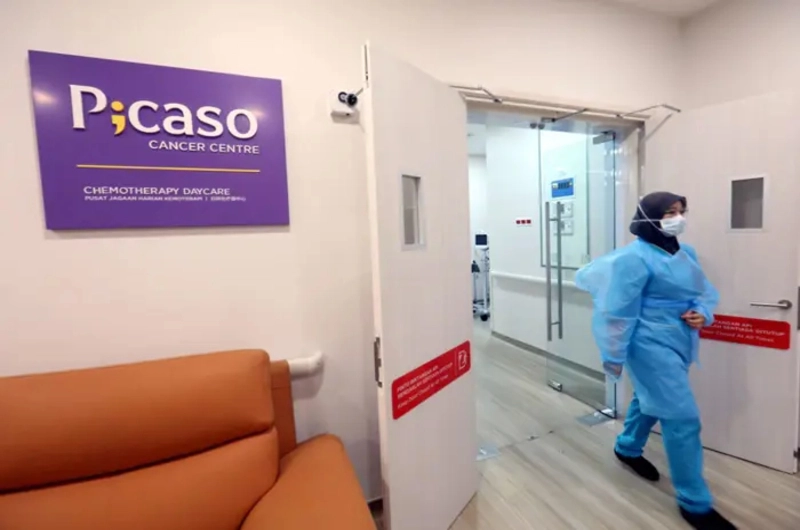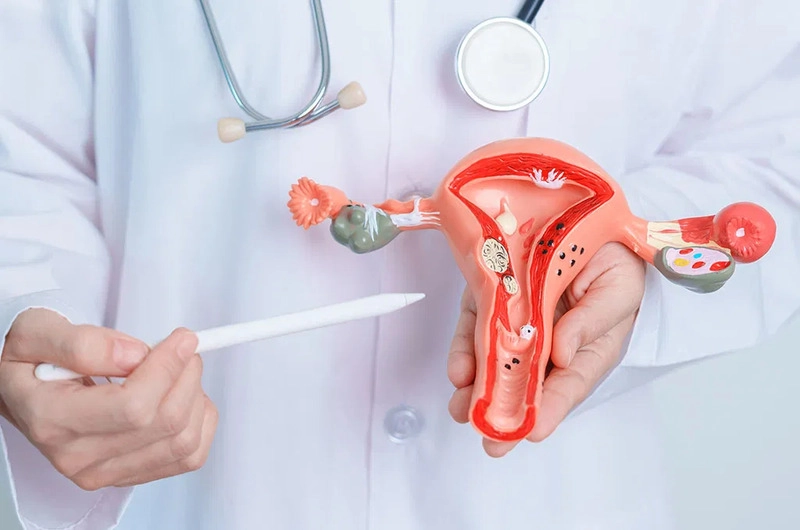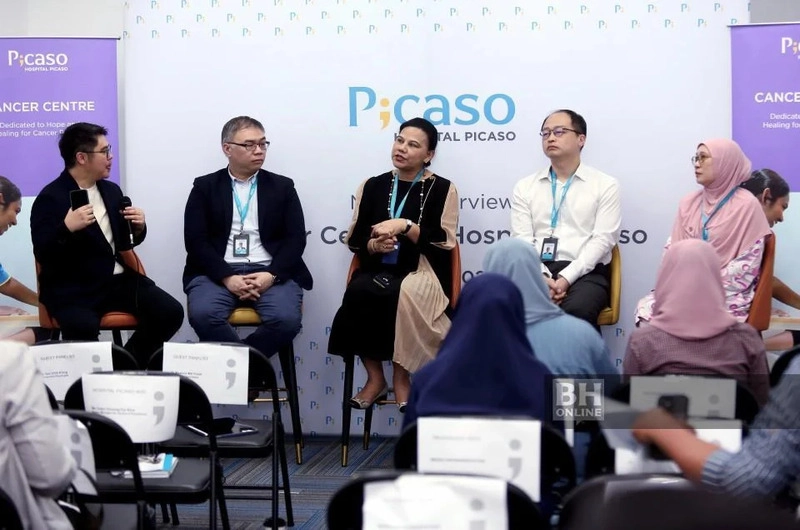New approaches to breast cancer care: A look inside Hospital Picaso
October 08, 2024
.png) by HIDAYATH HISHAM
by HIDAYATH HISHAM
RAISING awareness about breast cancer and adopting new approaches to treatment have become critical in improving the outcomes for patients diagnosed with this prevalent disease.
The continuous evolution of breast cancer treatment, including the shift from traditional methods to more refined and patient-specific approaches, is led by medical professionals like Dr Ng Char Hong (picture), a Consultant Breast & Breast Reconstructive Surgeon at Hospital Picaso.
Dr Ng, with over 23 years of experience in the field, made it clear that the approach to breast cancer treatment has transformed significantly over the years.
“We used to do breast cancer treatments by removing the whole breast and axilla. But now, instead of taking out the lump right away, we start with a biopsy to determine the type of cancer before planning the surgery,” he told The Malaysian Reserve (TMR).
This biopsy-first approach, particularly when dealing with specific types of breast cancer such as triple-negative breast cancer or HER2-enriched (Human Epidermal Growth Factor Receptor 2) breast cancer, allows for more precise treatment planning.
One of the crucial changes in breast cancer treatment is the increasing use of neoadjuvant chemotherapy, where chemotherapy is administered before surgery.
This approach allows doctors to gauge how well a patient’s cancer responds to the treatment before proceeding with surgery.
“By giving chemo first, we can judge whether the patient responds well, which ultimately improves survival rates,” Dr Ng said.
This shift helps in tailoring the treatment according to the patient’s specific type of cancer, enabling the doctors to adjust medications if the patient does not respond adequately to initial treatments.

Surgical approaches have also undergone significant advancements over the years.
In the past, the removal of the entire breast was the standard procedure, but today, doctors aim to conserve as much of the breast as possible.
“Nowadays, we no longer remove the whole breast if we can avoid it. We just remove the lump and some of the lymph nodes,” he explained.
However, in cases where the cancer is too extensive, a mastectomy may still be necessary.
Even in such instances, options for breast reconstruction are readily available to ensure that patients do not have to live with disfigurement.
“We try to make sure that the patient goes home with a breast as close to the original look as possible,” Dr Ng said, noting the importance of post-surgical reconstruction for the patient’s physical and psychological well-being.
Reconstruction methods include the use of silicone implants, latissimus dorsi flaps, or pedicle TRAM flaps. TRAM flap stands for transverse rectus abdominus myocutaneous flap. It is a surgical technique used in breast reconstruction, where muscle, fat, and skin from the patient’s own abdomen are used to reconstruct the breast after mastectomy.
These techniques allow surgeons to restore the breast’s shape and size, significantly improving the patient’s post-surgery quality of life.
Dr Ng himself is one of the pioneers in performing comprehensive breast reconstructions without the need for plastic surgeons, a practice that empowers breast surgeons to offer a complete range of care to their patients.
Breast cancer remains a growing concern in Malaysia, with increasing rates of diagnosis, particularly as the population ages and more people undergo screening.
“Our cancer trends are probably increasing because our population is getting older, and we are more into screening, so we get diagnosed earlier,” Dr Ng explained.
Although Malaysia’s breast cancer incidence is not as high as that in some developed countries, the rates are rising, with more cases being diagnosed as a result of earlier detection.
One of the most persistent misconceptions surrounding breast cancer is the fear of losing a breast.
Many women are reluctant to seek treatment due to concerns about mastectomy and its perceived consequences.
“People still believe that if they have breast cancer, they will lose their breast and end up with a cavity at the chest, but this is no longer the case.
“Even in advanced stages, we can cover the defect with skin or a flap,” he said.
This shift in surgical methods has helped address some of the fears that prevent women from seeking early treatment, which is crucial for better outcomes.
Another prevalent myth is that older women, especially those who have gone through menopause, are not at risk for breast cancer.
Dr Ng pointed out that in fact, in developed countries, breast cancer often happens in older women.
Conversely, there is also a misconception that younger women are immune to the disease.
Dr Ng said he does get patients with breast cancer in their late 20s and early 30s.
“It is a small group, but they do get it,” he said, emphasising the importance of regular breast checks and screening for all age groups. Women should start doing mammogram screening yearly from the age 40 – 50 and get one every two years after 50 years old.

Early detection remains the most effective way to manage breast cancer.
Dr Ng urged women to prioritise their health and undergo regular screenings despite their busy schedules.
He noted that women are often too busy with their families and forget to take care of their health, adding that mammograms, although sometimes considered painful, are now more comfortable with newer technology.
Campaigns encouraging women to attend mammogram screenings with friends can help in making the experience more pleasant and reduce the fear associated with the procedure.
For those who detect a lump in their breast or experience symptoms such as nipple discharge, Dr Ng advised seeking medical attention immediately, as these could be signs of breast cancer.
In order to detect breast cancer in its earliest stages, women need to screen, do a mammogram, and possibly an ultrasound.
Early-stage detection (stage zero or stage one) offers the highest survival rates, as treatments at these stages are less invasive and more effective.
While there is no guaranteed way to prevent breast cancer, early detection remains the best method for improving survival rates.
“There is nothing you can do to prevent breast cancer, but you can detect it early and get treatment,” Dr Ng said.
In rare cases, women with genetic predispositions, such as those who test positive for the BRCA1& BRCA2 (Breast Cancer gene 1 & Breast Cancer gene 2), may consider preventive measures, including prophylactic mastectomy.
However, for the vast majority of women, regular screening is the recommended course of action.
One aspect of breast cancer treatment that has seen substantial progress is the use of intraoperative radiotherapy, where radiation is administered during surgery.
This approach shortens the duration of treatment and reduces the need for prolonged radiotherapy sessions.
Radiotherapy can now be shortened to 15 days or even five days, or it can be done during surgery, which is called intraoperative radiotherapy.
Dr Ng noted that this method is not suitable for all patients but can be a valuable option for those who qualify.
The importance of a multidisciplinary approach to breast cancer treatment cannot be overstated.
At Hospital Picaso, patients benefit from a collaborative team of surgeons, oncologists, pathologists, and radiologists who work together to develop personalised treatment plans.
“The main thing about treating breast cancer now is that it is no longer just ‘I see you and treat you.’ We discuss the case with a team and decide on the best approach,” Dr Ng said.
In addition to the advancements in breast cancer treatment, Hospital Picaso offers a comprehensive and patient-focused care experience.
Dr Ng said the hospital’s integrated approach allows patients to undergo diagnosis, biopsy, and treatment planning all in one setting.
“We set this up so that patients can feel comfortable and get everything done without the stress of multiple appointments,” he said.
The hospital is designed with the patient’s comfort in mind, offering personalised care and cutting-edge technology.
It also provides essential support services, like genetic counselling and a cancer care shop for post-treatment needs such as post mastectomy bras and post chemotherapy wigs.
“We want to ensure that the patient journey is as smooth as possible,” Dr Ng noted.
Hospital Picaso’s commitment to innovation, such as intraoperative radiotherapy, further distinguishes it as a leader in breast cancer care.
By offering top-notch medical services and a holistic approach, the hospital ensures that patients receive the best possible treatment in a supportive and compassionate environment.
Back

